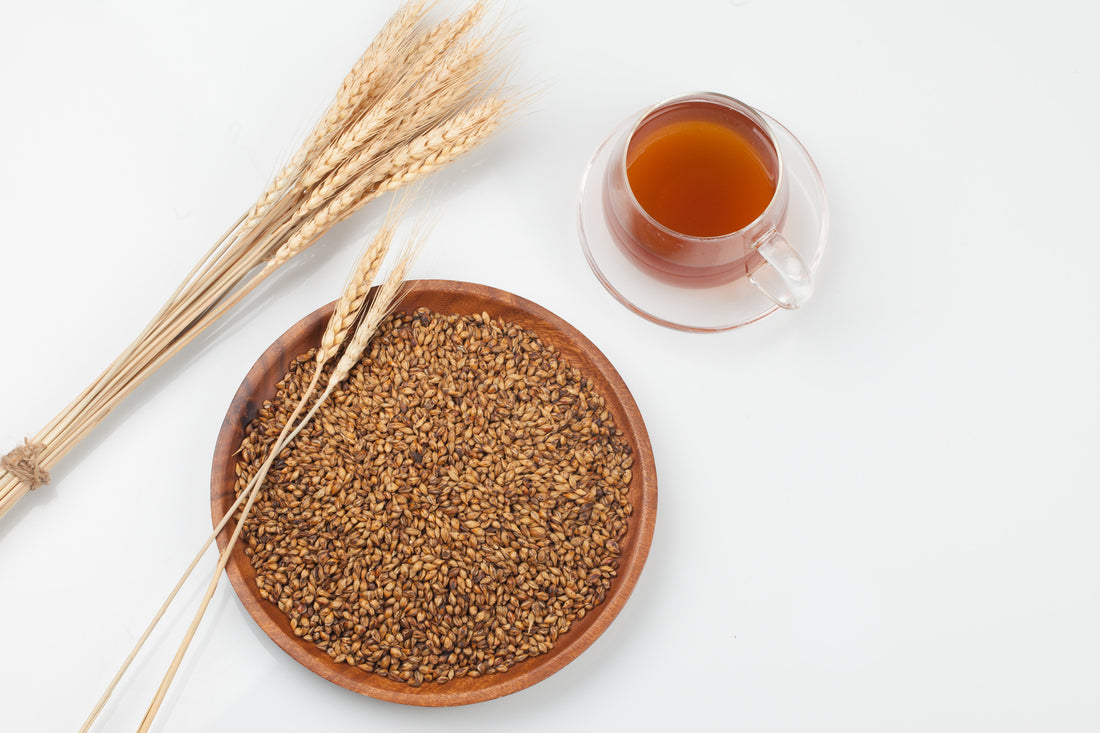Mugicha, or barley tea, is a traditional Japanese beverage made by roasting and brewing barley kernels. Widely enjoyed during Japan’s hot summer months, it offers a unique taste that’s both refreshing and nutty. Unlike many teas that come from the Camellia sinensis plant, mugicha is caffeine-free, making it a popular choice for people of all ages, especially as a cooling alternative to sugary or caffeinated drinks. But mugicha is more than just a thirst quencher; its cultural and health significance runs deep in Japan’s tea-drinking traditions.
A Brief History of Mugicha
The origins of mugicha in Japan date back to the Edo period (1603–1867), when barley was a staple crop in the country. During this time, the Japanese discovered that roasting barley produced a rich, earthy flavor, making it ideal for brewing into tea. As barley was widely available, it became a common beverage among ordinary people.
Over the centuries, mugicha has evolved from a humble drink to a beloved summertime staple in Japanese homes. Traditionally brewed cold, it’s often kept in large pitchers in the refrigerator during the warmer months, offering a refreshing drink throughout the day.
The Brewing Process

One of the most distinct aspects of mugicha is the roasting process. Barley grains are slowly roasted until they turn brown and fragrant, which brings out their sweet and toasty flavors. This roasted barley is then brewed either hot or cold. While hot brewing intensifies the roasted notes, cold brewing allows for a more subtle, crisp flavor that’s perfect for beating the heat.
Mugicha is available both in loose grains and in convenient tea bags, making it easy for anyone to prepare at home. It can be brewed like any other tea: steeping the barley in hot water for several minutes or using the cold-brewing method by soaking the tea in cold water and leaving it in the refrigerator for a few hours.
Mugicha’s Health Benefits
One of the main reasons mugicha remains a popular drink is its health benefits. Since it’s naturally caffeine-free, it’s gentle on the digestive system and doesn’t lead to the jittery effects that caffeinated beverages like coffee or green tea can cause. This makes it an excellent choice for children and those sensitive to caffeine.
Mugicha is also rich in antioxidants. The roasting process enhances the tea’s polyphenol content, which helps neutralize free radicals in the body and may reduce inflammation. Some studies suggest that drinking mugicha can help with circulation and digestion, making it beneficial for heart health and overall wellness.
Additionally, mugicha is hydrating and serves as a great alternative to sugary soft drinks or energy drinks. Its light, toasted flavor satisfies thirst without overwhelming the palate, making it an excellent companion to meals or as a stand-alone refreshment on a hot day.
Mugicha and Japanese Culture

In Japan, mugicha holds a special place in daily life, particularly during the summer. It’s a common sight in homes, restaurants, and even vending machines, where cold bottles of mugicha are readily available for a quick refreshment. Many Japanese families associate mugicha with childhood, as it is often the first “tea” that children drink due to its caffeine-free nature.
While mugicha is most often enjoyed as a cold beverage, it can also be consumed hot, particularly in winter, when its warming roasted flavor is comforting during colder weather. In this way, mugicha can be enjoyed year-round, though its association with summer remains strong.
Variations of Mugicha
While traditional mugicha is brewed from roasted barley, there are regional and personal variations to the drink that offer slight twists on the classic flavor. Some people blend mugicha with other grains or herbs, such as roasted corn or green tea, to create a unique mix that suits their taste. These blends often provide additional health benefits or flavor profiles, ranging from sweet to slightly savory.
In addition to variations in brewing ingredients, mugicha can also be sweetened, although this is less common in Japan. Some people add honey or sugar to mugicha, giving it a more dessert-like quality.
How to Enjoy Mugicha

Mugicha is incredibly versatile and can be enjoyed in different settings. Here are a few suggestions for savoring this traditional Japanese tea:
-
Cold-brewed Mugicha for Summer: Brew mugicha cold for a light, refreshing drink to help combat the heat. It pairs well with light meals such as sushi, salads, or fruit.
-
Hot Mugicha for Comfort: Sip on hot mugicha in the colder months, letting its nutty, roasted notes warm you up. It’s a great alternative to coffee for a caffeine-free warm drink.
-
Mugicha for Children: Since it’s caffeine-free, mugicha is ideal for kids. It can be a healthy, hydrating beverage that introduces them to the tea-drinking culture without the side effects of caffeine.
-
Mugicha for Hydration: Replace sugary sodas or juices with mugicha for a healthier hydration option. Its natural flavors make it a satisfying and guilt-free choice for drinking throughout the day.
Conclusion
Mugicha continues to hold a cherished place in Japan’s tea culture, offering a healthy, refreshing, and caffeine-free beverage for all to enjoy. Whether cold-brewed for a hot summer day or served warm in the winter, its nutty flavor and hydrating qualities make it a versatile tea that is enjoyed by generations. As people around the world continue to discover the benefits of roasted barley tea, mugicha’s appeal is poised to grow, bridging the gap between tradition and modern tea-drinking preferences.

